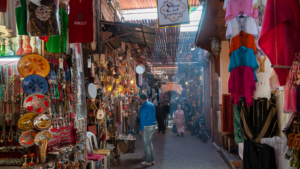Local heritage forms the backbone of a community’s unique identity, weaving together the threads of history, culture, and tradition. It encompasses everything from age-old customs and architectural landmarks to local cuisine and folklore. These elements not only connect people to their past but also shape their present and future, fostering a sense of belonging and pride.
Understanding what is local heritage means diving into the stories and experiences that have shaped a community over generations. It’s about recognizing the significance of preserving these cultural treasures and the role they play in maintaining diversity in an ever-globalizing world. As communities continue to evolve, safeguarding local heritage ensures that future generations can appreciate and learn from the rich tapestry of their predecessors.
By exploring what local heritage truly entails, individuals can gain a deeper appreciation for the distinct characteristics that make each community special. This understanding can lead to more meaningful connections and a stronger commitment to preserving these invaluable cultural assets.
What is Local Heritage?

Understanding what is Local heritage encompasses a community’s shared history, culture, and traditions. It includes tangible elements like architecture, artifacts, and natural landscapes, as well as intangible aspects such as customs, languages, and rituals. These cultural components collectively shape a community’s identity and influence its social dynamics.
Cultural expressions, like traditional music and dance, offer insights into a community’s values and beliefs. Architectural heritage, including historic buildings and monuments, represents periods of significant development and artistic achievement. Culinary traditions reflect a region’s agricultural practices and historical influences. Folklore, passed down through generations, preserves local stories and legends.
The Importance Of Local Heritage
understanding what is Local heritage plays a crucial role in defining a community’s cultural identity and maintaining its unique traditions over time. By preserving these elements, communities help ensure their continuity and relevance in a rapidly changing world.
Cultural Identity
Cultural identity emerges from local heritage, giving a community its distinct character. It encompasses shared experiences and values expressed through unique cultural elements, such as language and art. These expressions provide a common foundation, fostering unity and a sense of belonging among community members. When cultural identity is strong, it encourages pride and respect for local customs, histories, and contributions to a broader multicultural fabric.
Preserving Traditions
Preserving traditions associated with local heritage safeguards intangible cultural treasures for future generations. These customs and rituals form the backbone of community celebrations and events, often serving as the basis for social interactions. By actively protecting these traditions, communities maintain continuity with their historical context and keep cultural narratives alive. Preservation efforts support the transmission of skills and knowledge, ensuring that both young and old understand the significance of their shared past and continue to partake in the community’s evolving story.
Key Elements Of Local Heritage

Local heritage embodies a community’s distinctiveness, anchored in both physical and cultural manifestations. Key elements offer a window into the past, enriching societal understanding and engagement.
Buildings And Architecture
Buildings serve as physical testaments to a community’s historical evolution. Architectural styles, ranging from colonial to modernist, reflect societal changes over time. Structures like historic homes, religious buildings, and landmarks contribute to the area’s unique aesthetic and cultural narrative. Architectural preservation fosters an appreciation of craftsmanship and historical context for residents and visitors.
Traditions And Customs

Traditions form the living narrative of a community. Customs such as festivals, ceremonies, and communal gatherings, provide continuity and shared identity. These practices promote social cohesion by encouraging participation in collective cultural expressions. By observing and engaging in traditional rituals, communities honor their history and reinforce cultural values.
Natural Landscapes
Natural landscapes shape a community’s environmental identity and cultural connection to the land. Elements like mountains, rivers, and forests serve as symbols of local heritage and influence local myths and stories. Such landscapes offer spaces for traditional activities, like farming or spiritual practices, rooting the community’s lifestyle in its natural surroundings. Preserving these natural areas maintains biodiversity and cultural continuity.



